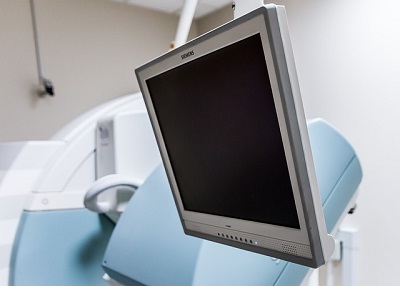Can Ultrasound Misdiagnose Adenomyosis?
Adenomyosis is a condition in which the endometrial glands and stroma invade the uterine muscle layer, leading to either a uniform enlargement of the uterus or the formation of localized nodules. Patients often present with increased menstrual flow, prolonged menstrual periods, and progressively worsening dysmenorrhea.

Several methods are available to treat adenomyosis, including medication, surgery, and interventional therapies. The treatment plan should be tailored based on the patient's age, symptoms, fertility requirements, and other factors. Medication is a commonly used treatment option, including non-steroidal anti-inflammatory drugs(NSAID), hormonal medications, and Traditional Chinese Medicine, such as Fuyan Pill.
Surgical treatment is suitable for patients with severe symptoms, and common surgical approaches include hysterectomy and adenomyosis lesion resection. Interventional therapy is a newer treatment method that reduces blood supply to the lesion by methods such as uterine artery embolization, thereby alleviating symptoms.
Ultrasound examination is one of the most commonly used and essential methods for diagnosing gynecological diseases. It is a noninvasive, convenient, and relatively affordable diagnostic approach. Ultrasound emits sound waves into the body, receives the reflected waves, and forms images. This helps doctors observe the uterus's size, shape, structure, and blood flow.
Given that ultrasound is widely used in diagnosing adenomyosis, is there a possibility of misdiagnosis?
There is a particular possibility of misdiagnosis. Several factors can influence the accuracy of ultrasound examination:
Firstly, the performance and resolution of the equipment play a critical role. Older or lower-performance ultrasound machines may have limitations in image clarity and detail, which can affect the accuracy of the diagnosis.
Secondly, the examining physician's experience and technical skills are crucial. Experienced physicians are more likely to detect subtle abnormalities, while less experienced physicians may overlook specific details.
Additionally, patient-specific factors should be considered. For instance, if a patient has significant abdominal obesity, the excess fat may reduce the penetration of sound waves, leading to a decrease in image quality.
The complexity of adenomyosis itself can also impact ultrasound diagnosis. In the early stages of the disease, symptoms may not be typical, and the lesion may be small, making it challenging for ultrasound to detect.
Adenomyosis might be misdiagnosed as several conditions:
Uterine Fibroids: Uterine Fibroids are benign tumors formed by the proliferation of smooth muscle tissue in the uterus, which can also cause uterine enlargement and changes in shape. However, uterine fibroids typically have well-defined borders, while the lesions in adenomyosis often lack distinct boundaries.
Uterine Enlargement: This condition involves uniform enlargement of the uterus but generally does not include the invasion of endometrial glands and stroma. On ultrasound, the echo pattern of the uterine muscle layer in uterine enlargement is usually uniformly enhanced, whereas adenomyosis often presents heterogeneous echo changes.
Endometriosis: In some cases, the symptoms of endometriosis can resemble those of adenomyosis, leading to potential misdiagnosis. However, endometriosis lesions are often localized and may appear as cystic or solid nodules on ultrasound, differing from the diffuse lesions in adenomyosis.
Although there is a possibility of misdiagnosis with ultrasound, this does not mean we should deny its significant value in diagnosing adenomyosis.
In practice, ultrasound often provides valuable diagnostic information for doctors. For patients suspected of having adenomyosis, doctors typically combine clinical symptoms, gynecological examination, and other auxiliary diagnostic methods, such as magnetic resonance imaging (MRI) and serum CA125 testing, to make a comprehensive judgment and reduce the occurrence of misdiagnosis.
In conclusion, while ultrasound is not perfect for diagnosing adenomyosis, it remains an indispensable and essential tool. Patients should not overly worry about the potential for misdiagnosis with ultrasound but should actively cooperate with their doctor's examinations and treatment while maintaining a positive outlook.
You may also be interested in:
Can Adenomyosis Be Misdiagnosed as Endometrial Cancer?
Why Choose Herbal Treatment for Adenomyosis?
Long-term Dysmenorrhea from Adenomyosis: These 2 Exercises Can Help
What Impact Does Scanty Periods On Adenomyosis Patients
previous pageAdenomyosis: 3 Things to Know Before Getting a Mirena IUD
next page- Herbal Treatment for Adenomyosis with Large Uterine Enlargement and Heavy Bleeding
- Adenomyosis Dysmenorrhea: A Practical Guide to Topical Traditional Chinese Medicine Methods
- Effective Chinese Herbal Remedies for Adenomyosis Pain: End Your Period Discomfort
- Adenomyosis with Unbearable Cramps: When Painkillers Don't Work—Natural Relief with Fuyan Pill
- Managing Adenomyosis: Easing Pelvic Pain and Heavy Menstrual Bleeding with Natural Approaches
Testimonials
- Adenomyosis with Ureaplasma Urealyticum Cured by Fuyan Pill
- Tubal blockage with hydrosalpinx can be cured by TCM shortly
- Fuyan Pill Helps A woman with Adenomyosis Get Pregnant
- A Woman with Hydrosalpinx Is Cured with Fuyan pill
- Pelvic Inflammatory Disease Testimonials
- Irregular Vaginal Bleeding and Endometrial Thickening Cured by Fuyan Pill
- Pruritus Vulvae and Frequent Urination: Mycoplasma Infection Cured after 2 Courses



